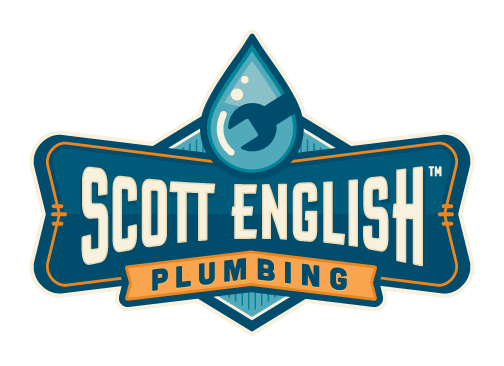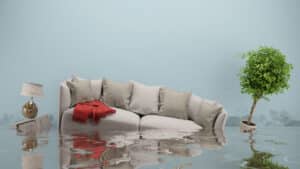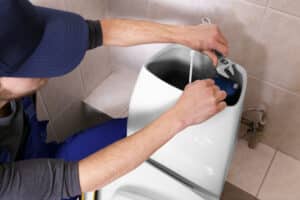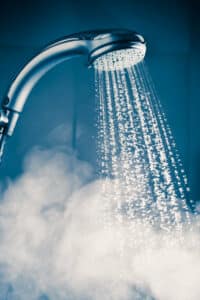What Plumbers Wish Homeowners & Renters Knew About Plumbing
Plumbers know the ins and outs of your garbage disposal, bath, toilets, and sinks. They usually can diagnose and fix a problem as soon as they see it. They also realize that homeowners and renters use their plumbing the best way they can, but there are a few tips that plumbers with homeowners knew. These tips can actually help homeowners and renters rely on their own knowledge, so they have fewer emergency plumber calls.
- 1. Avoid grease and oil in the kitchen sink. In order to avoid clogged drains, it is important to never pour cooking oil down the kitchen sink. As oils and greases cool, they congeal and cause problems in the pipes. The grease and oil builds up over time and reduces the space that water can flow through the pipes. The best thing to do is put oil in an empty container, like a can or a carton. Then, you can simply throw the cooled oil away in your garbage can.
- 2. Food scraps should go in garbage can. Garbage disposals are truly a convenience for homeowners, but they should not be used in place of the garbage can. Unfortunately, garbage disposals get over used and many of the items that are placed in them are not broken down very well. Any type of organic food scrap should be put in a compost pile or disposed of in the trash. The best foods to put in the garbage disposal are citrus peel because they freshen the disposal and small fish bones or chicken bones because they clean the walls of the disposal.
- 3. Know where your water shutoff is. Accidents happen, so it is important to know where the shutoff spot for your water is. If you have an emergency and you do not know where to turn off the water to your home, you could potentially face damage that is expensive to repair. If you do not know where it is, give us a call.
- 4. Pay attention to your plumbing. Too many homeowners ignore minor problems. Unfortunately, those small problems can grow to large problems. A dripping faucet could end up need to be completely replaced if ignored for too long. Instead, if you call the plumber, you might find that the repair is affordable and less expensive than you originally thought it would be.
- 5. Love your water heater. We take our hot water for granted, until we no longer have it. In order to keep the hot water coming, homeowners should give some attention to their water heaters because they do require regular maintenance. The tanks should be flushed annually and the anode should be checked annually for rust. They are expensive to replace, but inexpensive to maintain.
- 6.Be careful with the chemicals. Homeowners often resort to chemicals to clean their drains. While the chemicals will unclog drains, they can do damage to the pipes that you cannot see. If you are using drain chemicals on a regular basis, it is better to call us than to continue using quick fixes from the grocery store aisles.
- 7.Hire licensed plumbers. Homeowners tend to be leery of calling plumbers because they do not know what the plumber will charge. Instead, homeowners will hire a friend or relative to complete a plumbing job in an effort to save money. Unfortunately, these money saving tactics often backfire and plumbers are ultimately called in to fix the problem. In many cases, the problem costs more to fix than the original job would have cost. Anytime you need plumbing work completed, it is in your best interest and the best interest of your home to call a professional, like us.
If you have any questions or concerns about the plumbing in and around your home, please do not hesitate to give us a call at: (714) 987-9801 or 714-987-9801.


 Older toilets can use a ton of water every time you flush. By law, toilets that were manufactured after 1993 must use 1.6 gallons of water or less for each flush. Prior to that, many toilets used anywhere from 3.5 to 7 gallons of water for every flush. New, ultra-efficient toilet models can use as little as 1.28 gallons of water for each flush. This means that if you have a toilet that was built prior to 1993, you could potentially reduce your water consumption by more than 5.5 gallons every single time you flush the toilet just by replacing it with a newer model. That could add up to tens of thousands of gallons every year. Not only does that make a dent in your water consumption, but it also can save you a significant amount of money on your water bill every month. You certainly won’t miss the water that is being flushed down the toilet.
Older toilets can use a ton of water every time you flush. By law, toilets that were manufactured after 1993 must use 1.6 gallons of water or less for each flush. Prior to that, many toilets used anywhere from 3.5 to 7 gallons of water for every flush. New, ultra-efficient toilet models can use as little as 1.28 gallons of water for each flush. This means that if you have a toilet that was built prior to 1993, you could potentially reduce your water consumption by more than 5.5 gallons every single time you flush the toilet just by replacing it with a newer model. That could add up to tens of thousands of gallons every year. Not only does that make a dent in your water consumption, but it also can save you a significant amount of money on your water bill every month. You certainly won’t miss the water that is being flushed down the toilet. Another way to painlessly conserve water is to switch to a low-flow shower head. About 25% of the average American’s water usage goes toward showers. When you switch to a low-flow showerhead, you can get good water pressure while using much less water. A low-flow showerhead usually uses about 2.5 gallons of water or less per minute. Other showerheads – particularly large, rainfall-type showerheads – can use up to 20 gallons of water every minute. This means that you could potentially reduce your water usage in the shower by a whopping 90% while still enjoying a great shower with excellent water pressure.
Another way to painlessly conserve water is to switch to a low-flow shower head. About 25% of the average American’s water usage goes toward showers. When you switch to a low-flow showerhead, you can get good water pressure while using much less water. A low-flow showerhead usually uses about 2.5 gallons of water or less per minute. Other showerheads – particularly large, rainfall-type showerheads – can use up to 20 gallons of water every minute. This means that you could potentially reduce your water usage in the shower by a whopping 90% while still enjoying a great shower with excellent water pressure.